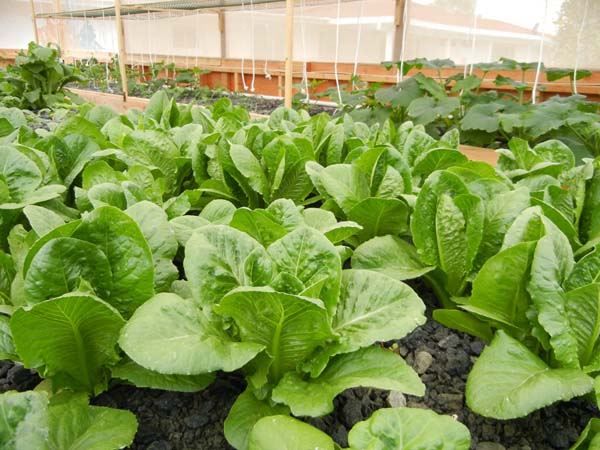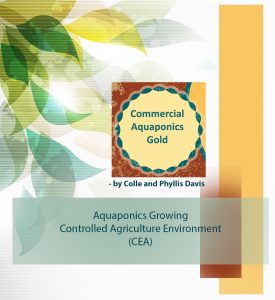Grow and Sell Food with Commercial Aquaponics
by Colle and Phyllis Davis
Becoming a commercial aquaponics farmer requires the technology information, plans, the permits, site preparation, the inspections, the ordering of the greenhouse and the thousands of small and large steps all of which are necessary. But once started on the site development and the assembling of the greenhouse everything becomes REAL and moves all the plans into actions. This is always a very exciting time for our new customers and brings a sense of ‘this is real’ for everyone involved.
All construction projects (large and small) require planning and careful execution to build that dream to completion. Every new building is surrounded with a glow and an energy that is very difficult to describe and yet everyone knows the feeling of accomplishment and the energy that result when carefully executive plans come together and begin to materialize.
Lettuce grown in Portable Farms uses 95% less water than traditional agriculture and grows in HALF the time as soil-grown lettuces.
Aquaponics
Dan Burden, AgMRC Content Specialist
D. Allen Pattillo, Department of Natural Resources Ecology & Management,
Iowa State University; North Central Regional Aquaculture Center (NRAC)
This closed-loop system has many advantages over conventional “open-loop” crop production systems:
- It uses approximately 10% of the land area and 5% of the water volume required by conventional vegetable crops.
- Due to less water and land use, aquaponics is perfect for highly efficient use of existing space or for special applications like intensive urban gardening.
- Crop production time can be accelerated. For example, butterhead lettuce varieties can be produced in about 30 days, instead of the typical 60-day growing period needed for conventional production.
- Production can occur year-round under a greenhouse or in a temperature-controlled enclosure. This allows producers to market fresh produce during seasons when trucked-in produce is at their highest seasonal prices.
- Aquaponics is an adaptable process that allows for a diversification of income streams. High-value herbs, vegetables, and leafy greens, as well as fish, crayfish, worms, mushrooms, and a number of other crops may be produced, depending upon local market interest and the interests of the grower.
- These systems allow agriculture to take large innovative steps toward environmental sustainability. Because these are mostly-closed-loop systems, nutrient effluent leaving the facility is virtually nonexistent. Additionally, fish, plant, and other waste solids may be captured and converted into value-added fertilizer products for wholesale or retail sale.
- Growers can start small, with minimal investment, perhaps using scrounged materials to see if the venture is “right for me,” then scale-up as markets and expertise develops.
Read our book, Commercial Aquaponics GOLD.
- This comprehensive information about commercial aquaponics provides you will all the facts you’ll need to make an informed business decision about commercial aquaponics growing in controlled environment agricultural (CEA).
- We’re also offering TWO FREE BONUSES with the purchase of Commercial Aquaponics GOLD: 1) A formal ten-step strategy business plan template designed specifically for commercial aquaponics growing to present to funders and, 2) PFAS LLC’s Executive Summary showing production and operating costs, profits and best-produce choices to achieve the shortest Return on Investment.
CLICK ON our fun video by the Crazy Professor, aka, Colle Davis, Inventor of Portable Farms, talk about commercial aquaponics and explain what his book Commercial Aquaponics Gold offers.



4 comments
Skip to comment form
Hi my name is Brad and we are looking at putting in some commercial units in Canada. Do you have a dealer in Canada or would we buy direct from you. I have asked for a price list and I am curious if the commercial unit prices are on the list
Author
Sorry for the delay.
You will buy directly from us.
Colle
price list
Author
Andrew,
The price list (if you missed the request button on the top right of every page? is here http://portablefarms.com/thank/pfapl.pdf
Colle